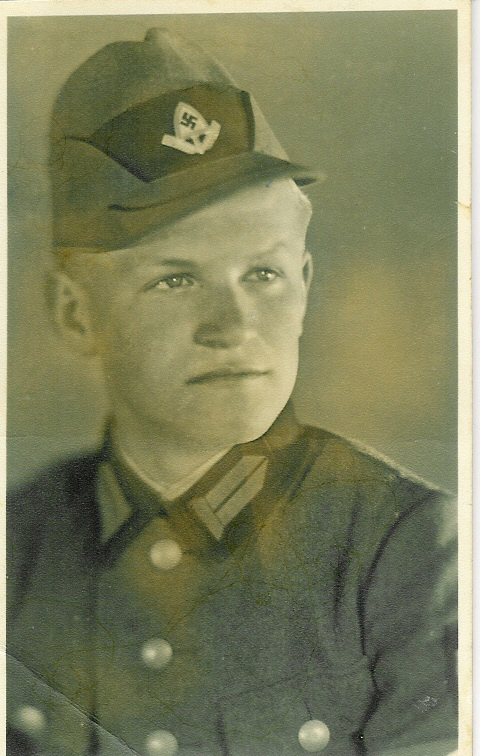I trained with the Luftwaffe, worked as a tailor and shoemaker in Russian captivity

Download image
Ludvík Smolka was born on February 23, 1926 in Vřesina, Hlučín region. The Smolka family owned a small farm, his father Teofil earned his living by playing the organ in local churches. After graduating from the municipal school, Smolka entered the gymnasium in Hlučín. In October 1938, the German army entered Hlučín and the local area became part of the Third Reich. He did not finish his studies for financial reasons, and so he apprenticed as a tailor at the apprenticeship school in Ratiboř. He then worked in Opolí for several months. In August 1943 he joined the Reich Labour Service in Wadowice, but in October 1943 he was called up to the air defence units in Gliwice. He subsequently trained as a deck gunner for Junkers Ju-88 aircraft with the Luftwaffe in Heiligenbeil (now Mamonovo) near Kaliningrad. When the bomber squadron was disbanded due to fuel shortages, he was transferred to the Luftwaffe’s 21st Field Division in 1943, with which he fought on the Eastern Front in the Baltic area. In the summer of 1944 he was wounded outside the town of Wenden (now Cēsis) in Latvia. Smolka was first transported to Riga, then by boat to Gdansk and then to a military hospital in Wroclaw. Until February 1945 he was treated in the hospital in Göttingen. Then he was called to rejoin his unit in the port of Libau (now Liepaja) in Latvia, where he sailed with the last German ship that managed to arrive. He took part in the fighting for Kuronian until the armistice. At Tukums, Latvia, he fell into Soviet captivity. The German prisoners of war were subsequently taken to a large collection camp near Riga, some of whom were transferred to the camps near Tallinn after a few days. In the following years they worked in various places in Estonia, for example in a towel factory in Narva or in a logging site near Tallinn. However, after a while Smolka managed to establish himself as a camp tailor and shoemaker. In 1948 he was transferred, along with several other prisoners, to a camp near the town of Krasnoye Selo, located about 40 kilometres from Leningrad (now St Petersburg). From there he was sent to nearby Palpus Lake, where prisoners of war worked in the forest. Thanks to his good Russian, he soon became an interpreter and was even able to go unsupervised to Krasnoye Selo to sell food. Soon, however, the prisoners of war were transferred to St. Petersburg, where there were a number of smaller camps. Only four years after the war did Smolka’s family learn that he was still alive. The messenger of good news was a friend who had returned from Soviet captivity a year earlier. At the end of 1949, Smolka was also released. After three weeks, a transport of German prisoners of war arrived in Frankfurt am Oder. He spent several more months in Germany and finally arrived in his native Vřesina on May 1, 1950. The Czechoslovak authorities then called him to work in the mines, where he had to work for a year and a half. When he regained his Czechoslovak citizenship in August 1951, he had to perform basic military service in the Czechoslovak army, specifically with the 3rd Infantry Regiment in Malacky, from November 1951 to the beginning of March 1952. Ironically, because of his war experience, he was selected for the position of squad leader. In civilian life he worked as a bricklayer until his retirement. Ludvík Smolka died in March 2019.











